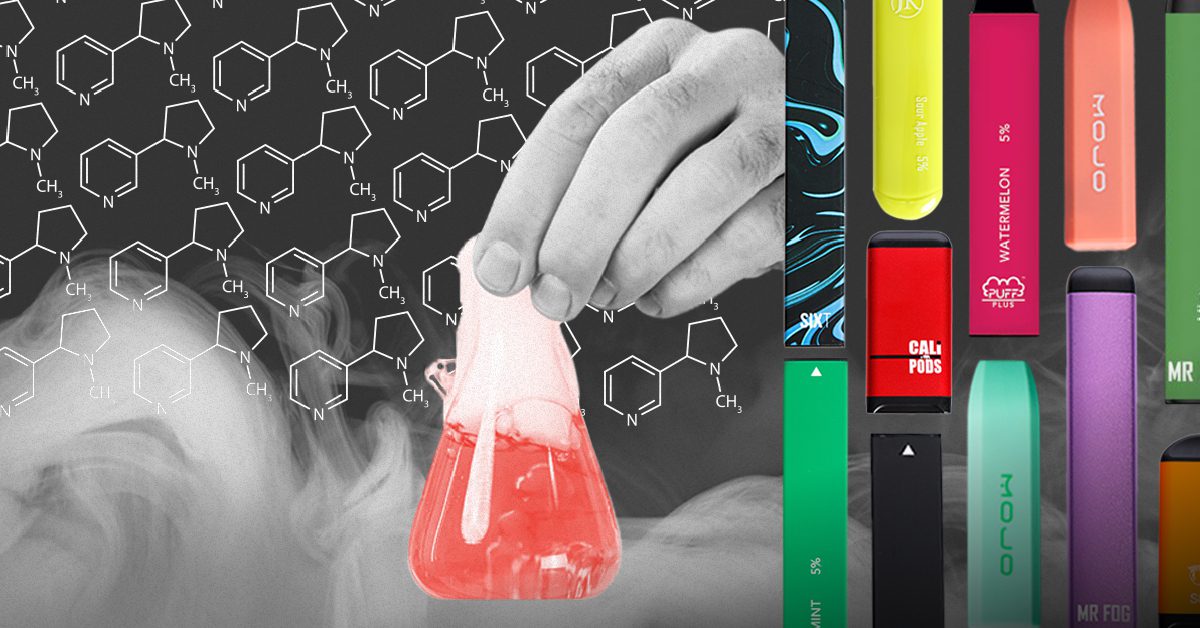
Big Tobacco’s attempt to evade regulation and taxation of emerging products
As the public health community continues to reduce and eliminate the threat of cigarettes and other combustible tobacco products, Big Tobacco is turning to alternative nicotine products to capture new generations of users in patterns of addiction.
The development of vaping devices allowed the industry to create nicotine products with kid-friendly flavors. What resulted was a worldwide epidemic of use among youth. In Oklahoma, 1 in 4 high schoolers currently vapes.
Vapes, also known as electronic cigarettes, are heavily marketed to young people — and one vape cartridge may contain as much nicotine as an entire pack of cigarettes. As state and federal regulators have worked to control the spread of these products, the tobacco industry is already shifting its focus to new ways of delivering addictive nicotine. Below, we’ll address some of the most commonly asked questions about these products.
What is synthetic nicotine?
Synthetic nicotine is nicotine that’s created in a lab — not derived from tobacco leaves. The development of these products has provided the vape industry a new opportunity to profit from users while evading tobacco regulation and taxation.
Is synthetic nicotine safe?
While it’s marketed as “pure” or “clean,” synthetic nicotine is still nicotine, which means it’s still unsafe for children and adolescents whose brains are still developing. It’s also just as addictive.
Does the FDA regulate synthetic nicotine?
In 2022, the Food and Drug Administration (FDA) began regulating synthetic nicotine products with the same standards as tobacco-derived products. As of April 2022, retailers are required to comply with FDA requirements prohibiting the sale of synthetic nicotine products to those younger than 21.
Unfortunately, synthetic nicotine products — including vapes and nicotine pouches — have become increasingly available. As a result, state governments and the FDA have struggled to control underage access and educate the public on their dangers.
Is synthetic nicotine banned?
Not yet. Anticipating that federal regulation was inevitable, the tobacco industry worked in advance to establish laws protecting these products from regulations and taxes.
In 2021, Oklahoma became one of the first states to explicitly remove non-leaf nicotine products, like nicotine pouches, from its legal definition of taxable tobacco products. This tobacco industry-friendly language, seen first in Oklahoma, allows companies to avoid excise taxes levied on other tobacco products and perpetuates the misconception that these emerging products are different from tobacco, even if the nicotine is derived from tobacco plants.
Fortunately, other states and local jurisdictions are providing a path forward for protecting the public. In 2020, Wyoming modified the definition of a tobacco product to include both synthetic nicotine products and e-cigarettes, which are also excluded from Oklahoma’s definition of a tobacco product.
As other states work to address the public health risks associated with these products, Oklahoma cannot afford to fall any further behind.
Want to stay updated on the latest tobacco news, products and legislation? Sign up for the Tobacco Stops With Me newsletter!